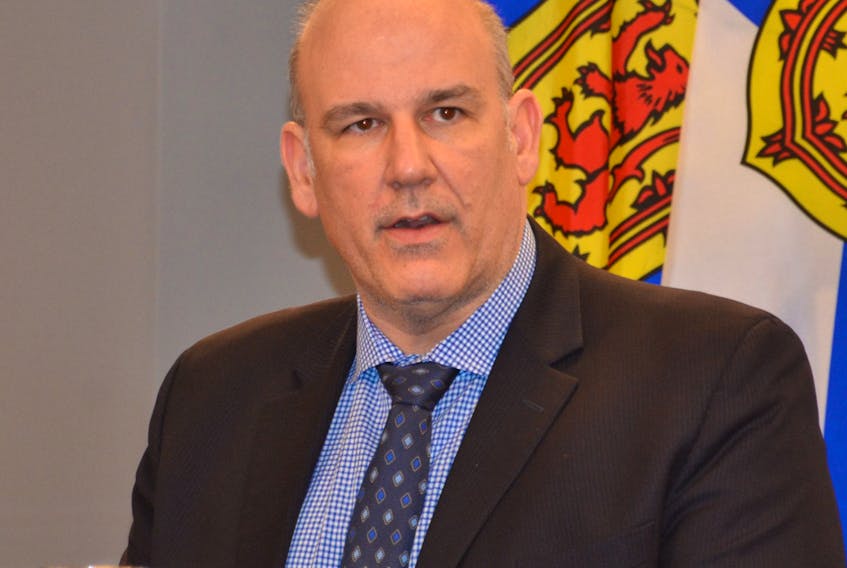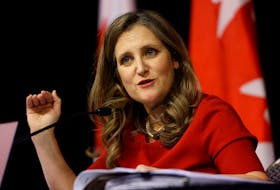The Rankin government’s first budget offers “finger foods on a napkin in areas where we need (a) meal on a plate,” according to Nova Scotia’s NDP Leader Gary Burrill.
“(T)his budget is a mile wide and an inch deep, and the more you dig down, the more you will notice everything that’s missing.” That’s from Tim Houston, leader of the official Opposition and the province’s Progressive Conservatives.
Nova Scotia’s opposition party leaders were pointing out that Nova Scotia’s 2021-22 budget – titled: A Fair and Prosperous Future: Path to Balance – contains modest, incremental funding for some of the province’s most vexing problems.
From here, Finance Minister Labi Kousoulis’ budget looks more like the spot where Premier Iain Rankin’s lofty ambitions met Nova Scotia’s financial reality.
And so, his government did what Nova Scotian governments do. It sprinkled a little bit of money in a lot of places and a lot of money in a few. As for programs that advance Rankin’s priorities – the environment, equity and social justice, and an economy that includes everyone – most got a little.
A little for big problems
The budget also professed to chart a path back to a balanced budget, and while the government claims that path will be smooth, the numbers suggest otherwise. Not coincidentally, we don’t start down that path until next year, and a provincial election is almost certain to come first.
On the spending side, the budget promises 150 new affordable housing units, but there are thousands of Nova Scotians on the waiting list for public housing and at least 500 Nova Scotians who have no home at all. Set against that backdrop, 150 new housing units appear rather meager – like finger food on a napkin.
Long-term care (LTC) is another area where the Rankin government seems to talk a better game than it plays.
During and since the Liberal leadership race, Rankin acknowledged that the pandemic exposed long-festering problems in long-term care – mostly nursing homes. Yet his government’s first budget makes, at best, a perfunctory attempt to deal with one of the biggest problems – overcrowded homes and the long list of Nova Scotians waiting for a bed in one.
An estimated 1,500 Nova Scotians are on that list, but the budget only commits to adding 230 new nursing home beds, and even those won’t all be here before 2025.
There’s more spending in the budget for LTC, but like Stephen McNeil’s government before them, the Rankin bunch appear content to manage LTC costs by limiting the supply, regardless of demand.
If there was a surprise in the budget – beyond its rather startling, but oddly fetching, multi-coloured cover – it was the $100-per-month raise for every Nova Scotian on income assistance (IA). That measure alone will cost the province more than $35 million annually and is, by far, the largest single increase in IA in Nova Scotian history.
Leading up to the budget, Rankin said there would be more help for those on IA, but the amount of the increase was unexpected, and it showed up the rather parsimonious increases McNeil’s government made in IA two years ago, after an excruciating five-year effort to “reform” the IA system.
And, yes, this is an election budget. It spreads around just enough money in key areas to allow the Liberals to claim progress on most fronts that matter to Nova Scotians.
A budget to wage an election on?
But ultimately, COVID and the calendar will dictate that election’s timing. The Liberals enter the fifth and final year of their current mandate in about nine weeks so, pandemic permitting, Nova Scotians will go to the polls well before they’ll see another provincial budget.
And it’s the next budget that starts Nova Scotia on the three-year path the government charted to a balanced budget. Year-over-year spending is forecast to be cut next year by more than $200 million compared to this year, and it will be four years before spending returns to this year’s level.
The government will tell you that’s because there’s a bunch of COVID-related spending this year that won’t be necessary in future years. That’s true.
But, the budget also includes a lot of stuff that requires ongoing, year-after-year funding.
With the province projecting a spending cut next year and very minor increases the following two years, the path to balance looks – on paper – like three years of restraint.
Of course, the government doesn’t see it that way or, if they do, they won’t admit it.









